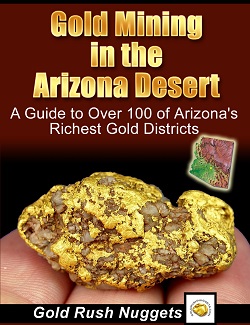
All that is left of Charleston is a few stone basements covered with underbrush. It’s history is closely tied to that of Tombstone, Arizona, due to the close proximity and the scoundrels that frequented both towns. Although the town of Charleston is long dead, its life should not be forgotten. The Foundation of Charleston .
Silver in Charleston, AZ
The reason for the birth of Charleston was silver. In 1879 silver ore was found close to a neighboring town of Tombstone. Due to a lack of water in Tombstone, the mills for ore processing were built on the banks of the San Pedro river. Workers needed to live somewhere, so two sister-towns were built, each on its side of the river. The first one was called Millville, the other-Charleston.
The man responsible for the town’s project was Amos Stowe. You can consider him a very successful opportunist, because he predicted the boom of population in Charleston, immediately bought the land there, built a sturdy-looking town with very attractive lease conditions. All of that combined made Charleston the bigger of the two towns.
The origin of the name Millville is quite obvious, but what about Charleston? The truth is very simple actually. It was named after the first postmaster, Charles D. Handy. A post office was an important institution those days because it connected the town to the outside world.
Silver Mining and Processing Methods
In order to understand the life of the people in Charleston, let us dwell a little bit on the main activity of this town and its closest neighbors. As any ore, silver is mined deep underground, using pickaxes, bores and other typical mining instruments. What differs silver from gold, is that the first one is not usually found in nuggets, but is most often combined into alloys with sulfur, arsenic, antimony or chlorine.
That is logical, because silver is more chemically active than gold, so it reacts with the minerals, contained in the bedrock. All of that means that silver ore must be processed and that is exactly what Charleston citizens’ main occupation was about.
The most widespread method of processing silver during that time was amalgamation. First, silver ore was crushed using stamp mills, then the resulting powder was mixed with salt, water (the main reason for moving the processing closer to the San Pedro River), copper sulfate and mercury. After that, all that mixture is spread over in a thick layer in a special shallow box and is left like that in the sun and mixed some more regularly to speed up the chemical reaction. The silver is then formed as an amalgam with mercury and after that it is easy to separate them.
Also Read: This Arizona Gold Mine was the Richest in the State
And: Metal Detecting for Gold Nuggets in Arizona
The Wild West
The 1800s were the days of the cowboys, duels, revolvers and saloons. Crime flourished during those days and Charleston was not an exception. However, Charleston was not a town where a man walking down the street would be often subjected to robbery or worse. As surprising as it sounds, there were almost no murders or robberies in the town itself.
Its notorious reputation comes from the fact that a lot of criminals were associated with town property. Outlaws owned saloons, ranches and were employed there. One notable outlaw is the Charleston judge, James Burnett. He was as corrupt, as a corrupt justice could be. He judged people outside the courtroom, thought up fines, that he pocketed himself. Due to the fact that there were no other government institutions, he became the dictator of Charleston.
In the end, justice found him. He was shot by someone who blamed him for the death of his daughter. He was shot during a confrontation at the O.K. Corral in Tombstone (though not during the famous “Shootout at the O.K. Corral”).
The Decline of Charleston
As it always happens with silver and gold rushes, the mines get depleted and the minerals run out. In 1886 miners dug so deep that they had found water deep in the mountains. At first, they thought it a gift from the gods because they didn’t have to send their ore to the mills situated some distance away from the mines. But then, the water started to come too fast and the mines got flooded and abandoned.
That led to a deep depression of the processing facilities in Charleston and Millville and, as a result, to the towns themselves. The last nail in their coffin was an earthquake in 1887. It turned most of the buildings into uninhabitable rubble and people began to leave. In 1888 the Charleston Post Office was closed and by 1889 the town was completely abandoned.
After that what was left of the town was consumed by nature and stray travelers and what remains now is only some adobe ruins covered by the underbrush.
Next: Exploring the Copper Mines of Miami, AZ

